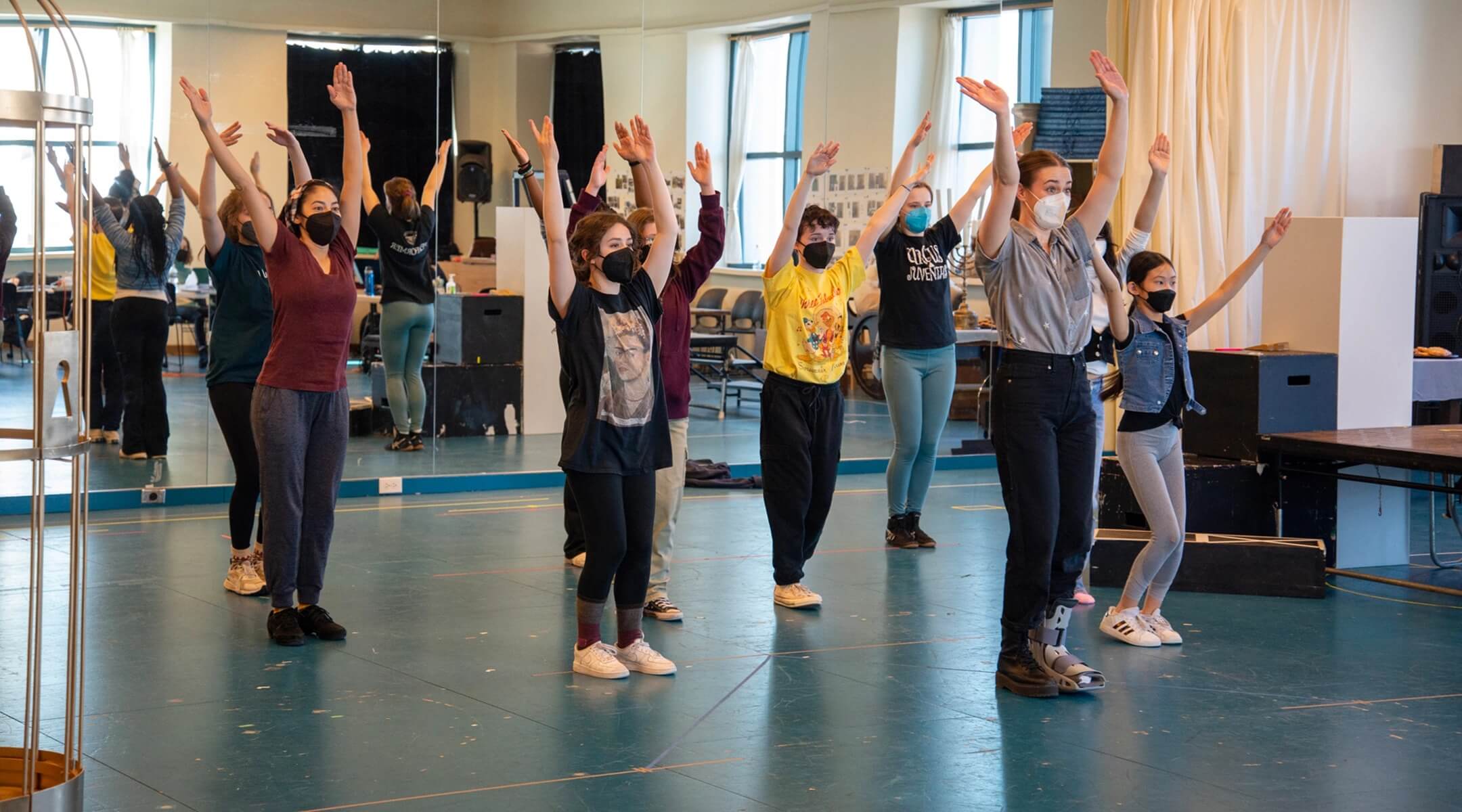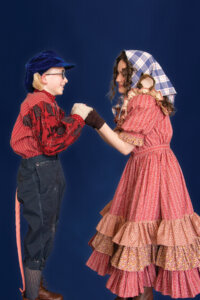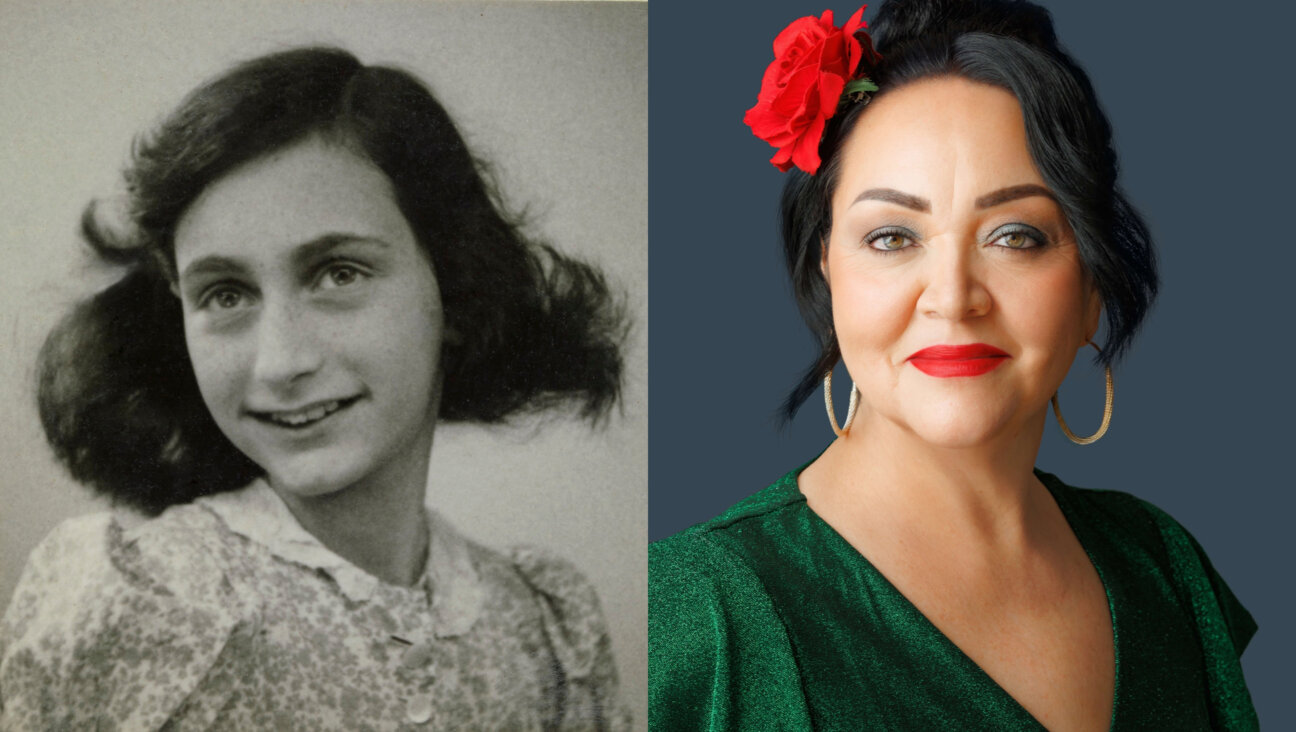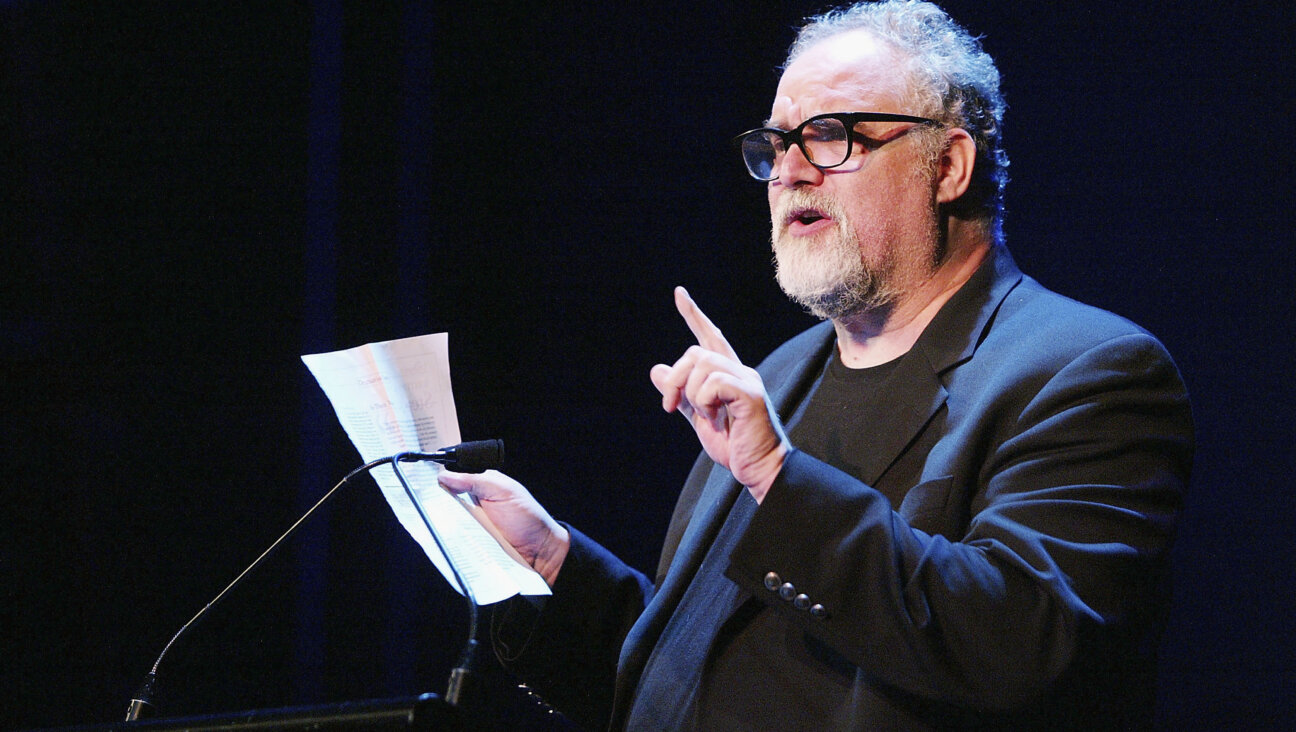‘An American Tail’ musical adaptation hopes a Jewish immigration story will resonate in 2023
The team hopes to tour the show if it has success at the Children’s Theatre Company in Minneapolis

A scene from rehearsal of ‘An American Tale the Musical.’ Photo by Kaitlin Randolph
(JTA) — Itamar Moses was 10 years old when he watched “An American Tail” at his Jewish day school in California. He was struck by the 1986 film, an animated musical about a family of Russian-Jewish mice who immigrate to America. Even though he was surrounded by Jewish classmates and teachers, he had never seen a cartoon with Jewish protagonists.
“Watching this mainstream hit American animated movie where the central character and the central family were specifically Jewish — it was unusual,” Moses told the Jewish Telegraphic Agency. “I think there was something that felt inclusive to us about that.”
Now a Tony Award-winning playwright, Moses has adapted the children’s classic for the stage. “An American Tail the Musical” will premiere at the Children’s Theatre Company in Minneapolis on April 25 and run through June 18. Along with writing by Moses, who won his Tony for a Broadway adaptation of the Israeli film “The Band’s Visit,” the new production features familiar songs such as “Somewhere Out There” and new music and lyrics by Michael Mahler and Alan Schmuckler (“Diary of a Wimpy Kid the Musical”). The team hopes to tour the show if it has success in Minneapolis.
The original film created by Don Bluth and Steven Spielberg follows the journey of a young, tenacious mouse named Fievel Mousekewitz. Fievel’s family lives below the human Moskowitz family in Shostka, a city in the Russian Empire, in 1885. Spielberg, who had yet to make “Schindler’s List” or widely address his Jewish family history, named the character after his maternal grandfather — Phillip or “Fievel” Posner — an immigrant from Russia.
The movie begins with the Mousekewitzes and the Moskowitzes celebrating Hanukkah when Cossacks tear through Shostka in an antisemitic pogrom, together with their animal counterparts — a battery of evil cats. The Mouskewitzes flee Europe and board a ship to America, where Papa Mouskewitz (voiced by Nehemiah Persoff) promises “there are no cats” and “the streets are paved with cheese.” But a thunderstorm at sea washes Fievel overboard, leaving his devastated parents and sister to arrive in New York City without him. Although they believe he did not survive, Fievel floats to shore in a bottle and sets out to find his family.
Of course, he quickly learns there are cats in America — along with corruption and exploitation. Fievel is sold to a sweatshop by Warren T. Rat, a cat disguised as a rat. A crooked mouse politician called Honest John (a caricature of the real Tammany Hall boss John Kelly) wanders Irish wakes, scribbling dead mice’s names in his list of “ghost votes.” But Fievel finds camaraderie with other immigrant mice rallying for freedom from the cats’ attacks and Warren T. Rat’s extortion. He befriends Italian mouse Tony and Irish mouse Bridget, who join the quest to reunite his family.
The film’s metaphors will be presented similarly in the stage version, which is also set in the 1880s, although Moses has expanded its lens on the immigrant groups that populated New York at the time. The musical will incorporate more “mice” communities, such as Chinese, Caribbean and Scandinavian mice, along with African Americans and former slaves.

“An American Tail” was part of a shift in mainstream media toward Jewish representation, said Jennifer Caplan, an assistant professor of Judaic Studies at the University of Cincinnati who has studied this cultural change.
“It came out in 1986, and then ‘Seinfeld’ premiered in 1989,” Caplan told the JTA. “People point to 1989 as this moment when representations of Jews changed. There was this feeling in the late ‘80s that people were looking for new, different, possibly even more explicit representations of Jews.”
Yet despite the movie’s resonance with children like Moses, some film critics complained that it wasn’t Jewish enough. Critics Gene Siskel and Roger Ebert gave the film “two thumbs down” on a 1986 episode of their program “At The Movies,” calling it “way too depressing” for children and arguing that it “chickened out” of an explicitly Jewish story. Ebert noted that while most adults would understand the Mousekewitzes were Jewish, the word “Jewish” never appears in the film, potentially leaving young audiences in the dark.
“This seems to be a Jewish parable that doesn’t want to declare itself,” he said at the time.
Unlike in Art Spiegelman’s graphic novel “Maus,” where Jews are mice and Nazis are cats, the cat-and-mouse metaphor of “An American Tail” is expansive. The cats represent a universal force of oppression — Cossacks in Russia or capitalists in America — while the mice encompass all persecuted immigrants, regardless of their religion, ethnicity or national origin.
Caplan admitted that some might not have seen it as a Jewish story at the time.
“In 1986, we’re right at the birth of the multicultural push in American schools,” said Caplan. “You’ve got kids who are learning about the melting pot. I think if you are not looking for the coded Jewishness and you’re not familiar with it, then this just seems like a movie about immigrants.”
But Moses, who said the movie held a “mystical place” in his imagination, did not view the story’s broad allegory as a shortcoming. Instead, he saw an opportunity to pull its continuous thread for a message he hopes will feel relevant today: that while immigrants discover inequality and abuse in America, the forces of injustice are changeable, and that people can overcome life’s harsh realities through “grit and hard work and coming together.”
“That message is always timely, but definitely coming out of the last few years and the conversations that America is having about immigration,” said Moses. “I wanted to tell this story that’s really a fable, so you can get at these ideas indirectly as opposed to in a dry, didactic way.”
Jodi Eichler-Levine, a Jewish studies professor at Lehigh University, argued the tale’s success lies in being a “story of Jewish immigration that appeals to non-Jews as well” and called the movie a “fairytale about America.” It premiered 100 years after the Statue of Liberty’s dedication in 1886, amid centennial celebrations of the country’s immigration history. In the film, the statue comes alive, winking at Fievel and his sister once they find each other and look west at the vast expanse of the United States.

Whether viewers still buy into the optimistic crescendo of “An American Tail” remains to be seen. Do Americans still believe, as Moses hopes, that immigrants and oppressed peoples can unite to overthrow the tyrants of unfettered capitalism? A Gallup poll from February showed that Americans’ satisfaction with the country’s level of immigration has dropped to 28%, the lowest point in a decade.
Moses is betting that children’s theater has a way of refreshing themes adults have exhausted with political discourse. Children want to grapple with the ideas at the core of the show, he said, such as “the needs of the individual and the needs of the collective, the need to go out on your own but still remain connected to your family and your background.”
“The most successful material for kids tends to engage with real things that they’re thinking about and worrying about,” he said.
Today, another wave of families has fled Fievel’s hometown: though Shostka was part of the Russian Empire in the 19th century, it is now in the Sumy region of northeastern Ukraine. The Sumy Oblast was among the first regions stormed by Russian forces in February 2022 and continues to suffer daily shelling. Eichler-Levine expects that global refugee crises will only continue to broaden the appeal of a migration story.
“The ideas [in An American Tail] are sadly relevant for most of the planet right now, given that climate change and devastation from war are leading to another tremendous wave of global migration,” said Eichler-Levine.
This article originally appeared on JTA.org.
The Forward is free to read, but it isn’t free to produce

I hope you appreciated this article. Before you go, I’d like to ask you to please support the Forward.
Now more than ever, American Jews need independent news they can trust, with reporting driven by truth, not ideology. We serve you, not any ideological agenda.
At a time when other newsrooms are closing or cutting back, the Forward has removed its paywall and invested additional resources to report on the ground from Israel and around the U.S. on the impact of the war, rising antisemitism and polarized discourse.
This is a great time to support independent Jewish journalism you rely on. Make a gift today!
— Rachel Fishman Feddersen, Publisher and CEO
Support our mission to tell the Jewish story fully and fairly.
Most Popular
- 1

Fast Forward Ye debuts ‘Heil Hitler’ music video that includes a sample of a Hitler speech
- 2

Opinion It looks like Israel totally underestimated Trump
- 3

Culture Cardinals are Catholic, not Jewish — so why do they all wear yarmulkes?
- 4

Fast Forward Student suspended for ‘F— the Jews’ video defends himself on antisemitic podcast
In Case You Missed It
-

Culture How one Jewish woman fought the Nazis — and helped found a new Italian republic
-

Opinion It looks like Israel totally underestimated Trump
-

Fast Forward Betar ‘almost exclusively triggered’ former student’s detention, judge says
-

Fast Forward ‘Honey, he’s had enough of you’: Trump’s Middle East moves increasingly appear to sideline Israel
-
Shop the Forward Store
100% of profits support our journalism
Republish This Story
Please read before republishing
We’re happy to make this story available to republish for free, unless it originated with JTA, Haaretz or another publication (as indicated on the article) and as long as you follow our guidelines.
You must comply with the following:
- Credit the Forward
- Retain our pixel
- Preserve our canonical link in Google search
- Add a noindex tag in Google search
See our full guidelines for more information, and this guide for detail about canonical URLs.
To republish, copy the HTML by clicking on the yellow button to the right; it includes our tracking pixel, all paragraph styles and hyperlinks, the author byline and credit to the Forward. It does not include images; to avoid copyright violations, you must add them manually, following our guidelines. Please email us at [email protected], subject line “republish,” with any questions or to let us know what stories you’re picking up.















